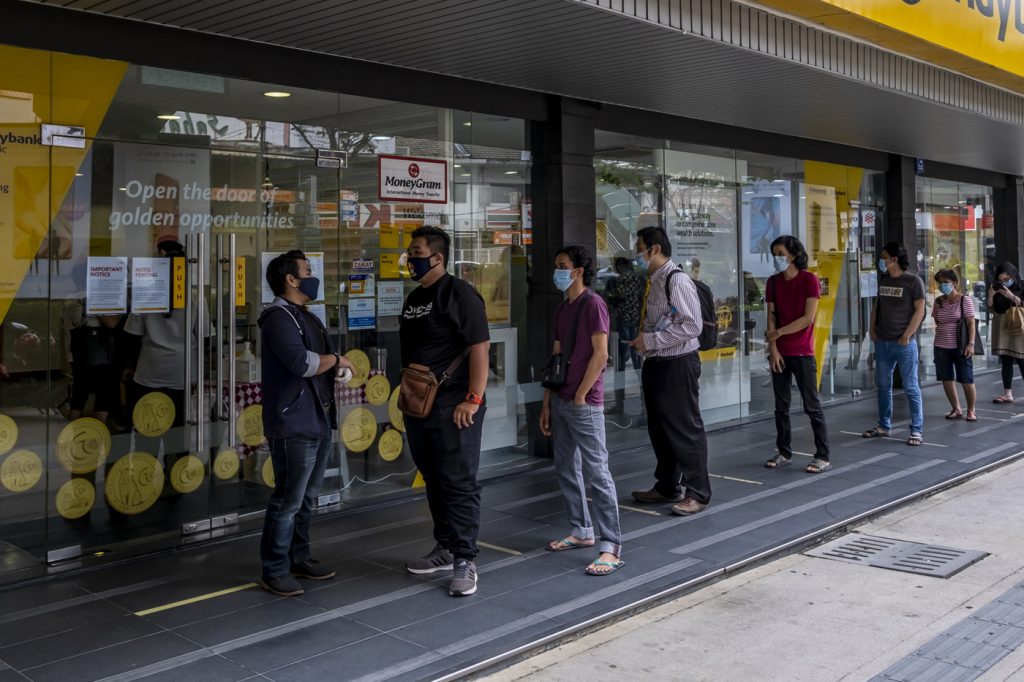Principle of Three: Customer-Centric Banking to Accelerate Out of Covid-19
Marked by an unforeseen voluminous shift to digital channels, areas of opportunity have emerged from the crisis. Seize the moment.

By Dr Amanda Salter
Change is now the new normal. Customer behaviour has undergone a seismic shift, with lockdown forcing customers to switch to non-branch channels. Uncertainty is set to continue even after the health crisis is over. Meanwhile, the gap between customer expectation and reality continues to grow. How can banks not only survive but thrive in these circumstances? I believe one answer is a customer-centric, responsible approach to banking.
This February’s Banking in the New Decade report by EY pinpoints Asia Pacific as the region with the biggest delta in profitability between outperforming banks and their peers (7.2% profitability gap versus 2.6% in North America). Let’s examine some of the factors that contribute to this high differential.
Five years ago, market intelligence firm IDC predicted that by 2020 the top 250 Asia-Pacific banks would all be executing a digital strategy, but their latest report, Fintech and Digital Banking 2025 Asia Pacific, indicates that the reality is far from it. Covid-19 has highlighted the gulf between banks that are ready to serve customers via digital versus banks that are not.
Right now, leaders practicing customer-centric digital banking are reaping the biggest rewards. One such is Ping An Group, which started its customer-centred digital transformation in 2013. In 2018, 16.4% of group profit came from investments into tech startups; 40% of new customers came from mobile apps; and their net promoter score was 40%, a top quartile measure of customer satisfaction in banking. Their suite of mobile apps not only supports basic banking, it provides self-service for wealth management, insurance, foreign exchange, and trust management. E-learning resources are also available. When Covid-19 hit, Ping An was ready, and quickly launched a ‘Do It At Home’ campaign. In two weeks, three million customers made 11.7 million transactions, and 475,000 customers watched online lectures on mutual funds, private equity investment, financial law, and taxation.
In contrast, a recent PwC study titled Virtual Banking: Malaysian Customers Take Charge found a whopping 45% of Malaysian banking customers suffer from bad user experiences and a lack of online functionality provided by their bank. These unhappy customers expect better digital experiences and are looking to virtual banks to remedy this. Incumbents, take heed – this is a clear shot across the bow.
Despite the recent forced shift to non-branch channels, evidence from the same IDC study suggests that only 30% of Asia-Pacific customers are actively using digital banking. A recent study by analytics firm Research and Markets, lists Maybank, CIMB, and HSBC as the banks with the least digitally active customers amongst its peers. What is driving this poor customer adoption rate? Customers are fed up of time-consuming, repetitive, and frankly, boring processes; 70% of Asia-Pacific banking customers view banking as a tedious experience. They expect slick and engaging experiences across all channels. Without this, engagement and adoption suffer, followed by loss of advocacy, and ultimately, loss of the customer.
It’s telling that only 20% of Asia-Pacific banks believe that they truly understand their customers, according to the PwC study. This is arguably the root cause of these woes. A frightening 38% of traditional bank revenue will be at risk by 2025 because of new competition and digital disruption. How do banks not only catch up, but accelerate out of the Covid-19 crisis?
Successful banks will be those that adopt a socially responsible, customer-centric operating model. Here are three relevant opportunity areas, which I’ve come to nickname digital banking’s Principle of Three and its corresponding rules for great customer-centric execution.
+ Take advantage of digital acceleration.

In the last few months, banks have worked faster than they would have ever thought possible. McKinsey estimates that Covid-19 has accelerated the shift to digital by two years. Given the uncertain economic climate, spending will be under scrutiny. But there are big potential returns, and uncertainty should not delay transformation. EY estimates an additional US$800 billion (RM3.4 trillion) in revenue could be generated through serving unbanked and underbanked individuals and micro-, small- and medium-sized enterprises across Asia Pacific. Banks need to continue improving their digital capabilities to reach and serve customers as effectively and efficiently as possible.
Three principles to give customers the most value right now:
+ Build customer trust and loyalty.
According to the EY Future Consumer Index, over 50% of consumers believe their future purchase decisions depend on whether a bank actively supports the community, is transparent in all they do, and is doing good for society.
Citing responsible banking, National Australia Bank has allowed business customers to defer repayments, reduced loan rates, and given access to loans worth billions of dollars in response to the crisis. Personal customers are able to pause mortgage repayments, reduce loan repayments, and access reduced loan rates and funds previously locked in mortgage accounts. By showing that they actively care for and support customers and communities, banks can build customer trust and loyalty for the long term, leading to increased customer advocacy, and share of wallet.
Three principles to build customer trust and loyalty right now:
+ Redefine your service offering

Many banks have creatively redefined what banking does, to provide what customers really need in crisis. South Korea’s KB Financial Group is providing masks and food supplies to local communities. HSBC is waiving all remittance fees for donations and medical purchases, and partnering with healthcare providers to offer virtual consultation services to ease pressure on hospitals. DBS has launched online medical consultations, online lesson videos for kids, and contact tracing. These boundary smashing initiatives are investments for long-term success.
Three principles to effectively redefine your service offering right now:
The pandemic has highlighted significant opportunity areas. Banks that can align to customer-centric, socially responsible banking are well placed to make the most of these opportunities, distance themselves from the competition, and emerge triumphant, regardless of crisis.
Dr Amanda Salter is Associate Director at Akasaa Agile CX. She has delivered award-winning global CX strategies and is currently working with the UK Office for National Statistics on its digital transformation. Her recent guest lecture at Cambridge University shared insights from architecting impactful digital customer experiences. Dr Salter holds a PhD in Human Centred Web Design, BSc (Hons) Computing Science, First Class, and is a certified member of the UK’s Market Research Society and Association for Qualitative Research.